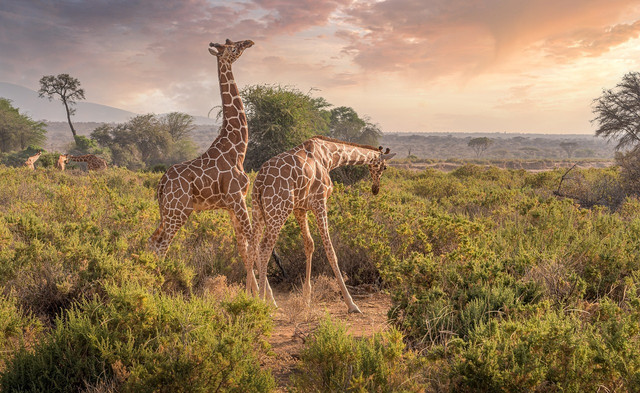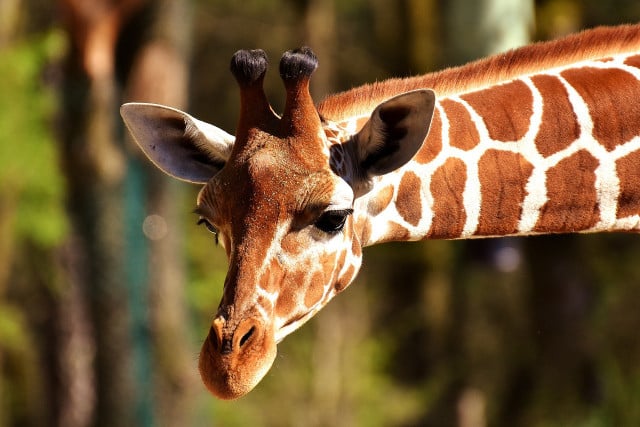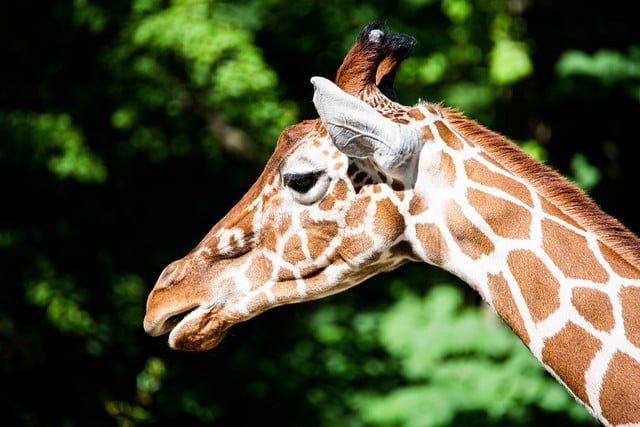Are giraffes endangered? We’ll take a closer look at the world’s tallest mammals along with the misconceptions you might still believe about them.
With legs taller than most humans on earth and a running speed of over 35 miles per hour, the long-necked, spotted giraffe is an animal that’s hard to miss.
Like many other African mammals, giraffes are facing conservation issues. However, unlike the majority of ‘well-known’ endangered species, the conservation status of the giraffe is not so clear-cut. Are giraffes endangered? There are many misconceptions about what threats giraffes face and if they can even be classed as endangered or not. Learn more about these beautiful giants below.
Giraffes, or giraffa camelopardalis, are one of the most iconic safari animals. Before we get to the serious topic of conservation, here are some fun facts about the giraffe:
- Usually found in the savanna areas of Sub-Saharan Africa, the giraffe seeks out areas of vegetation where their long necks allow them to eat leaves and greenery at much higher levels than any other animal on earth.
- The keystone species eats a herbivore diet, the giraffe’s great height helps them to look over the savanna and avoid becoming the victim of their most significant predators, including lions and other big cats.
- Giraffes are also very social animals, living in groups of up to 20 and roaming in areas as small as 33 square miles.
Are Giraffes Endangered?

Although typically referred to as just ‘giraffe’, the Giraffe Conservation Foundation (GCF) found four different species and seven subspecies in their research from 2016. The species are
- the Northern giraffe,
- the Southern giraffe,
- the Reticulated giraffe, and
- the Masai giraffe.
The IUCN SSC Giraffe and Okapi Specialist Group (GOSG) currently only recognizes a single species, Giraffa camelopardalis, which had been the recognized consensus before the GCF paper. This one species is listed on the IUCN website together with eight subspecies. Learn which ones are endangered.
Almost All Subspecies of Giraffe Are Endangered



To answer the question of whether giraffes are endangered in general, we first have to look at how many giraffes are actually left in the wild.
Overall, the IUCN estimates that there are around 68,000 giraffes in the wild, with the captive population being between around 1,000 and 2,000. The GCF estimates a number of over 117,100 giraffes in the wild. Whichever of the both numbers is more accurate — it might seem high compared to other endangered species (the snow leopard has a population of less than 7,000). But giraffes are unfortunately still considered endangered.
According to the IUCN Red List, all but one subspecies of giraffes were classed as vulnerable in 2016 after being previously labeled as a ‘Least Concern’ from 2008 to 2010. Some of the subspecies that the GCF found in their research are also listed as subspecies by the IUCN already, which is why we have an official conservation status for those subspecies. Here are the species according to the GCF, their numbers in the wild and the conservation status of their subspecies.
Northern Giraffe — only around 6,000 left in the wild
- West African Giraffe: Vulnerable
- Nubian Giraffe: Critically Endangered
- Kordofan Giraffe: Critically Endangered
Masai Giraffe — just over 45,400 remaining in the wild
- Masai Giraffe: Endangered
- Luangwa Giraffe (Thornicrofts Giraffe): Vulnerable
Reticulated Giraffe — almost 16,000 individuals remaining in the wild: Endangered
Southern giraffe — almost 50,000 individuals
- South African Giraffe: not listed by the IUCN
- Angolan Giraffe: Least Concern
This increased vulnerability is even more concerning when you look at the statistics, as the number of wild giraffes is suggested to have dropped by nearly 40 percent in the last 15 years.
To learn more about how the spots of these distinct giraffe species differ, where they live and what is being done for their conservation, see the comprehensive poster by the GCF.
Why Are Giraffes Endangered?



What is the cause of this drastic population drop? Like many Sub-Saharan animals, the giraffe’s plight is believed to result from human encroachment on their native habitats and poaching. As they require a high amount of vegetation each day, losses of habitat are particularly damaging to the giraffe:
- Conversion of woodland and trees for ranching and charcoal farming in West Africa has depleted much of the giraffe’s natural habitat.
- Conflict and war in these habitats such as Sudan have not helped these numbers, with rates of giraffe poaching and animal trafficking shown to have increased during periods of unrest.
- Giraffe bone marrow and brain are believed by some to be a cure for HIV/AIDS, with parts of a poached giraffe known to fetch over $140 for use as an alternative medicine.
In addition, giraffes are seemingly quite susceptible to disease. One mystery condition that causes grey lesions in the giraffe’s skin is particularly concerning, as scientists have yet to find a cure nor the cause behind this illness.
Misconceptions About Giraffe Conservation



Although it seems fairly straightforward, there are several misconceptions surrounding the endangerment of giraffes and their conservation.
In particular, the idea that giraffes were not previously under threat or have only become vulnerable in the last few years is often claimed as fact. Unfortunately, the giraffe’s plight is much greater than you’d think. This misconception has a tragic origin, as giraffes were previously not given much conservation attention. Unlike less well-known species, it was taken for granted that this iconic animal was exempt from becoming vulnerable. This has led to a so-called ‘silent extinction’ of giraffe populations in countries such as Mali and Eritrea.
Another misconception about giraffes is that this lack of previous attention means nothing is being done to protect giraffes in the present. Fortunately, this is not true. Not only is there now research into the disease-based factors causing the population to decline, but multiple organizations are working to track giraffe numbers, increase anti-poaching protection laws and promote conservation education.
In 2017, the ESA successfully challenged the US Fish and Wildlife Service (FWS) for failing to recognize the giraffe’s potentially endangered status sooner, resulting in its vulnerability getting greater worldwide attention.
Despite there still being an uphill battle to go before the giraffe’s vulnerability is fully recognized, many organizations are doing vital work to make sure that the giraffe doesn’t face ‘silent extinction’ once again.
Learn more about endangered species on Earth:
- Are Praying Mantises Endangered? No—But People Think They Are
- Why Are Tigers Endangered? The 4 Major Threats
- Are Honeybees Endangered? How to Help the Honeybee
- Why the Mexican Gray Wolf is Endangered and How You Can Help
- Why Are Red Pandas Endangered & How Can We Help?
- Are Narwhals Extinct or Endangered? How Can You Help?
- Are Bears Endangered? These 3 Species Are
- Are Sea Lions Endangered? Threats & What You Can Do
- Endangered Trees: 10 At-Risk Species
- The 15 Most Endangered Animals in America
Read more:
- The 15 Cutest Exotic Animals in the World
- Environmental Organizations: 8 NGOs and Non-Profits Worth Supporting
- Should Zoos be Banned? It’s Complicated
Do you like this post?









